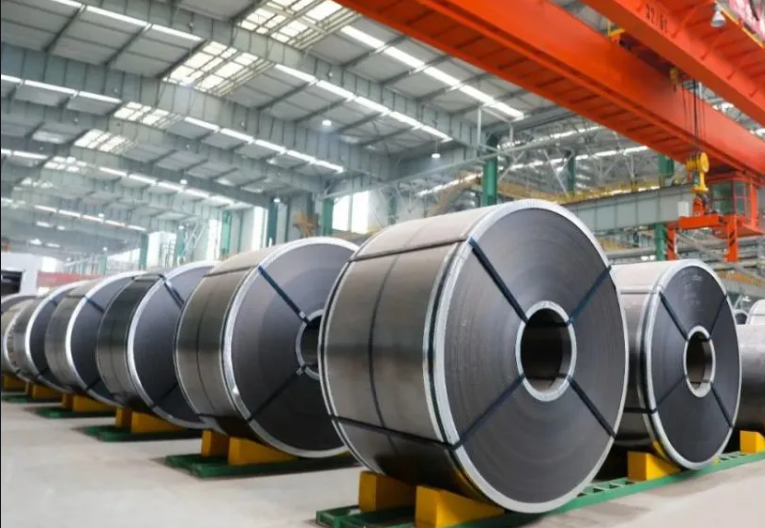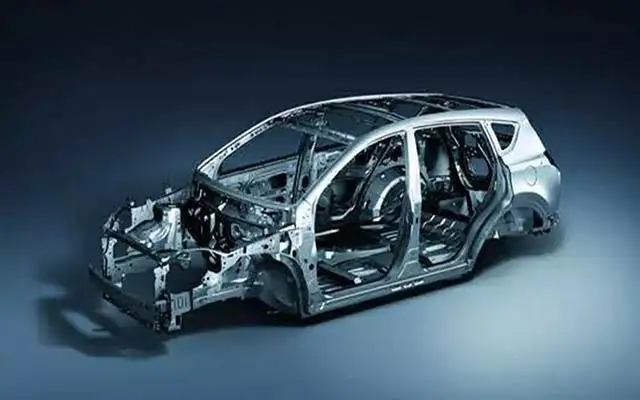
The main grades of JIS standard series are SPHC, SPHD, SPHE. Among them, the first S is the abbreviation of Steel; the second P is the abbreviation of Plate; the third H is the abbreviation of Heat; the fourth F is ultra-deep drawing. Therefore, SPHF refers to hot-rolled steel sheets and strips for ultra-deep drawing. This steel is one of the most common types of steel.
What is the chemical composition of SPHF steel plate?
In order to prepare plates for SPHF ultra-deep drawing, it is first necessary to ensure that the composition of the steel is suitable. The elements needed for this type of steel are: carbon, manganese, silicon, phosphorus, sulfur. In addition, steel must contain low levels of impurities such as oxygen and nitrogen.
SPHF steel belongs to ultra-low carbon microalloyed steel. The composition of SPHF steel is similar to that of other hot rolled low carbon steels. Typical chemical compositions of SPHF steels are as follows:
Carbon (C): ≤0.08
Silicon (Si): ≤0.05
Manganese (Mn):≤0.50
Phosphorus (P): ≤0.025
Sulfur (S)≤0.025
Aluminum (Al)≥0.010
The main difference between SPHF steel and other hot-rolled low-carbon steel grades is the content of microalloying elements. Microalloying elements endow SPHF steel with excellent mechanical properties such as high strength, ductility and weldability. In addition, microalloying elements increase resistance to cold cracking and hot embrittlement during welding.
What are the physical properties of SPHF steel plate?
-Mechanical behavior
Yield strength: ≧180MPa
Tensile strength: 270-380MPA
Derivative rate after breaking: ≧40%
*The specified values shall not be applied to both ends of the irregular section strip.
*The following may be applied as the upper limit of tensile strength as agreed between the purchaser and the manufacturer.SPHF:380 N/mm
-SPHF steel plate has good deep drawing properties and is suitable for ultra deep drawing applications.
– The surface finish of the sheet is good and the dimensional accuracy is good.
– It exhibits excellent mechanical properties, including high strength and good toughness.
What is the smelting method of SPHF steel plate?
It adopts the oxygen converter smelting method. The oxygen top-blown converter steelmaking process is mainly a process of high-temperature physical and chemical reactions such as carbon reduction, temperature rise, dephosphorization, desulfurization, deoxidation and alloying. The process operation is to control charging, oxygen supply, slagging, temperature and adding Alloy particles, etc., to obtain the required molten steel, and cast into qualified steel ingots or cast bad.
What is the manufacturing process of SPHF steel?
Hot-rolled steel sheets are made by heating raw materials above a critical temperature and then rolling them to the desired thickness. The process of hot rolling steel usually involves passing the raw material through a series of rolls, with each roll gradually increasing in temperature. The raw material is fed into the first set of rollers, usually at room temperature, and then passed through each set, getting hotter with each pass.
After reaching the desired thickness, the plate is rapidly cooled to room temperature. This cooling can be done in air or in water, depending on the grade of steel being produced. The finished product is then passed through a final set of rollers to remove any scale that may have formed during the cooling process. .
Once the surface preparation is complete, the final step is to cut the sheet into the desired shape and size. This can be done in a number of ways including waterjet cutting or plasma cutting.
Hot-rolled steel plate is an essential material for manufacturing SPHF ultra-deep drawing parts. The hot rolling process imparts the required mechanical properties to the steel sheet, such as high toughness and good formability.
What are the characteristics of SPHF ultra-deep drawing steel?
1) Hot-rolled steel sheets for ultra-deep drawing are produced by controlled cooling and heat treatment processes. The surface finish of these sheets is critical to their performance during deep drawing.
2) The surface finish of hot-rolled steel sheets for ultra-deep drawing can be divided into two types: rough and smooth. The rough surface is usually made by hot rolling, while the smooth surface is usually made by pickling.Rough surfaces are characterized by a higher degree of texture and irregularities. These surface features can serve as sites for crack initiation and propagation during deep drawing. Therefore, rough surfaces are generally not used in applications that require high reliability or safety.
3) On the other hand, the smooth surface provides good crack resistance and excellent formability. This makes them ideal for deep drawing applications. The surface roughness of hot-rolled steel sheets for ultra-deep drawing is usually measured using a profilometer. The average Ra value should be less than 3 microns to ensure good formability.
What is the thickness of SPHF steel?
The comparison table of steel thickness of the same series is as follows:
Symbol of grade | Application thickness mm | Application |
SPHC | 1.2 or over up to and incl.14 | For commercial |
SPHD | 1.2 or over up to and incl. 14 |
|
SPHE | 1.2 or over up to and incl.8 | For processing |
SPHF | 1.4 or over up to and incl.8 |
|
The tolerances of hot-rolled steel sheets for ultra-deep drawing are much tighter than those of conventional steel. Sheet thickness can be as low as 0.5mm and width as low as 10mm. Steel belts can also be very long, up to 12m. This allows for very precise manufacturing tolerances, which is essential in applications where precision is critical.
What is the delivery method of SPHF steel plate?
Steel strips and steel plates with pickling surface can be delivered with or without oiling. Pickled steel plates and steel strips after oiling can be guaranteed to be rust-free within three months under normal packaging, transportation, handling and storage conditions, and the oil film can be eliminated with alkaline aqueous solution.
What are the advantages of SPHF steel plate?
1) Good processability: The above-mentioned annealing and temper rolling process improves the processability of these steel plates. This makes them ideal for deep drawing applications.
Excellent surface quality: The final annealing process gives these steel plates a smooth and uniform surface finish. This is very important to ensure that the finished product has a high-quality appearance.
4) 3) High dimensional accuracy: The hot rolling process used to produce these steel plates results in products with very good dimensional accuracy. This is essential in applications requiring precise dimensions.
What are the real applications of hot-rolled steel sheets for SPHF ultra-deep drawing?

Hot-rolled steel sheets have many potential applications in ultra-deep drawing processes. Some examples include:
- Automotive parts such as fenders, doors and hoods
- Electrical parts such as washing machine tubs and dryer drums
- Building materials such as panels and siding
- Food service equipment, such as restaurant counters and food preparation stations

